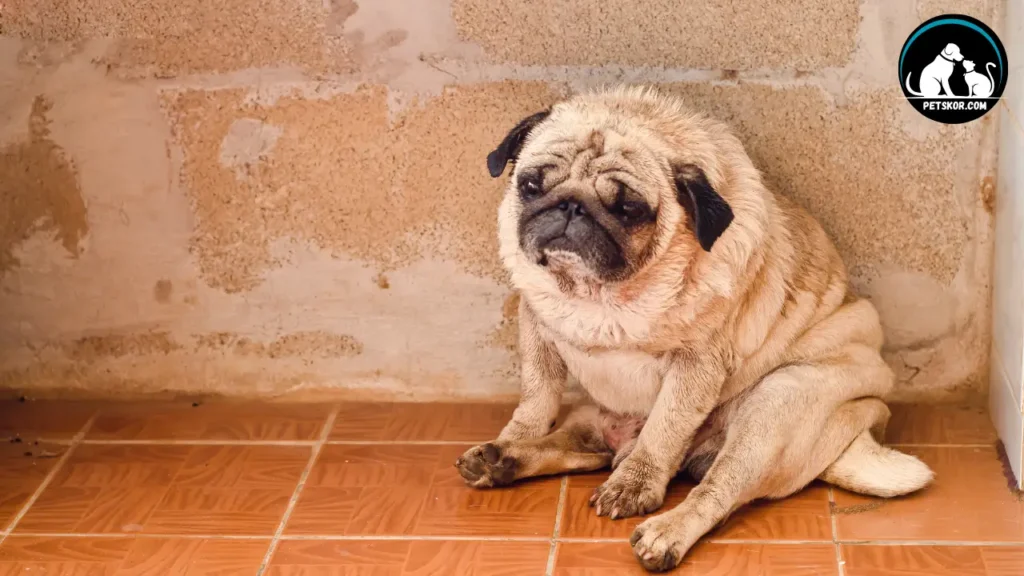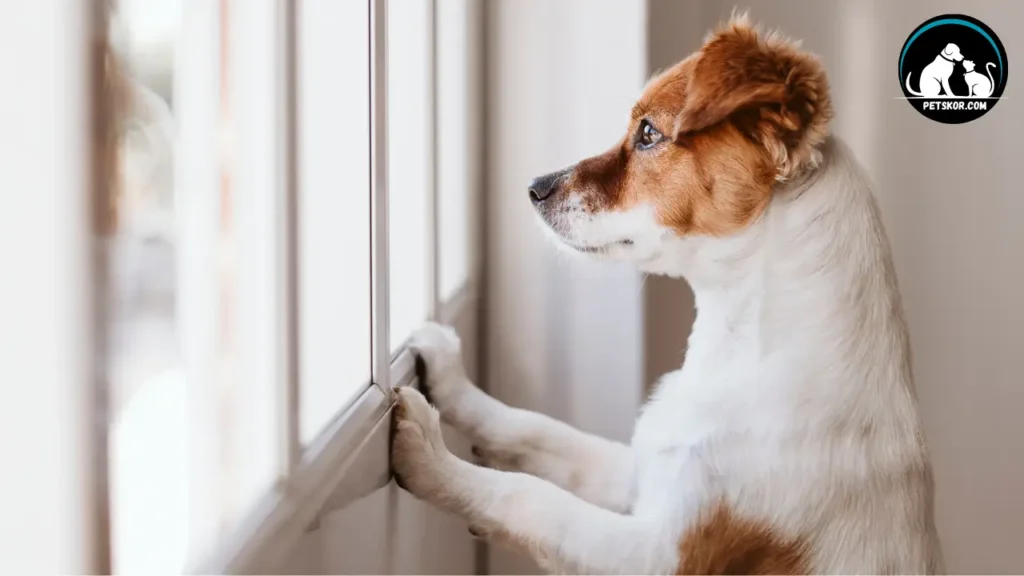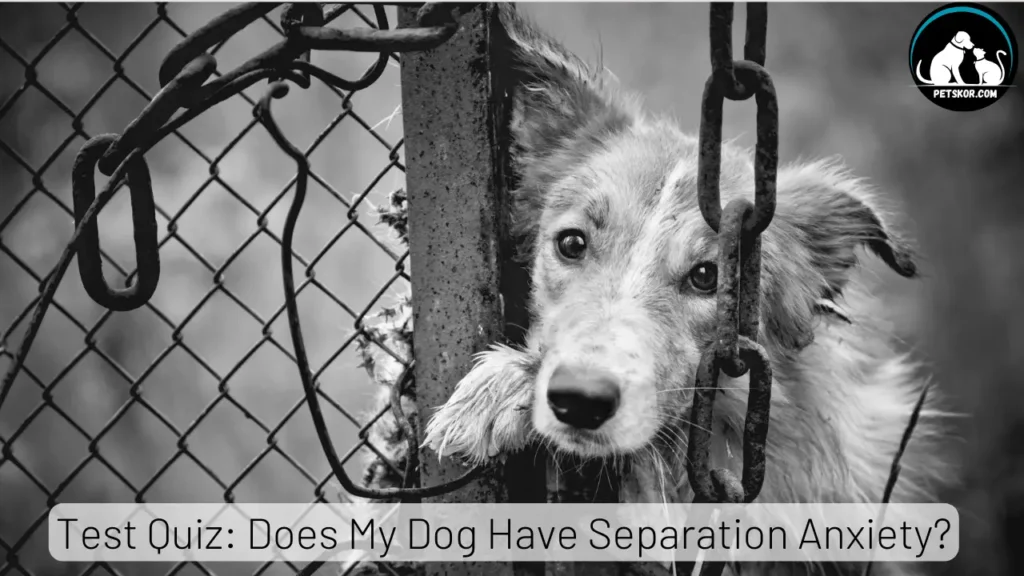Welcoming a furry friend into your life brings immeasurable joy and companionship. However, with wagging tails and wet noses, dogs can sometimes exhibit behaviours that signal distress when left alone. Separation anxiety in dogs is a common concern among pet owners, impacting not only your beloved companion’s well-being but also your household’s harmony.
Does my dog have separation anxiety quiz: In this blog post, we’ll delve into separation anxiety, guiding you through a comprehensive test quiz designed to help you determine if your canine companion is experiencing this challenging condition.
Whether you’re a seasoned pet parent or considering bringing a dog into your home, understanding the signs and symptoms of separation anxiety is crucial for fostering a happy and healthy bond with your four-legged friend.
Quiz: Does My Dog Have Separation Anxiety?
Does My Dog Have Separation Anxiety?
Does your dog show signs of distress when you’re about to leave?
Does your dog follow you around excessively when you’re home?
Does your dog engage in destructive behavior when left alone?
Does your dog excessively vocalize (bark, whine) when you’re not around?
Does your dog show signs of depression or lack of interest in activities when you’re away?
Does your dog urinate or defecate indoors when left alone?
Does your dog excessively lick, chew, or scratch themselves when left alone?
Please rate this Does my dog have separation anxiety quiz in the comment section.
Causes of Separation Anxiety In Dogs

-
Dogs are creatures of habit, and any sudden change in their routine, such as a change in their owner’s schedule or a move to a new home, can trigger separation anxiety.
-
Canines that have experienced trauma or neglect in the past may develop separation anxiety as a result of the fear of being abandoned again.
-
Dogs that have yet to be properly socialized as puppies may have difficulty being alone, as they haven’t learned to feel comfortable in various environments or with different people.
-
Some puppies may have a genetic predisposition to anxiety disorders, including separation anxiety. Certain breeds are more prone to this condition than others.
-
Dogs that depend on their owners for companionship and attention may struggle to cope when left alone.
-
In some cases, separation anxiety may be a symptom of an underlying medical condition, such as thyroid problems or neurological disorders.
-
A recent traumatic event, such as the loss of a companion animal or the death of a family member, can trigger separation anxiety in pups.
-
Dogs that are under-stimulated mentally may become anxious when left alone, as they have no outlet for their energy and may resort to destructive behaviours out of boredom.
-
Dogs may become anxious if their owners leave unpredictably or for long periods without warning, as they need to know when their owners will return.
-
canines are highly attuned to their owner’s emotions, and if their owner is stressed or anxious, it can exacerbate the dog’s anxiety, including separation anxiety.
Related Post: How to Keep Hardwood Floors Clean with Dogs
Symptoms of Separation Anxiety In Dogs
-
Excessive vocalization (barking, howling, whining)
-
Destructive behavior (chewing, scratching)
-
House soiling (urinating or defecating indoors)
-
Pacing or restlessness
-
Attempts to escape
-
Excessive drooling or panting
-
Refusal to eat
-
Shadowing behavior
-
Depression or withdrawal
-
Hypersalivation
Treatment of Separation Anxiety In Dogs
-
Desensitization and counterconditioning
-
Gradual departures and returns
-
Provide enrichment and mental stimulation
-
Create a safe space
-
Use calming aids cautiously
-
Obedience training for confidence
-
Avoid punishment, focus on positive reinforcement
-
Consult a professional (veterinarian or behaviorist)
-
Medication may be considered in severe cases
-
Consistency, patience, and compassion are key
Related Post: Why do Puppies get Urinary Tract Infections?
How To Prevent Your Dog From Separation Anxiety?

Preventing separation anxiety in dogs involves proactive measures from the early stages of their life. Starting early with training and socialization is crucial. As soon as you bring your puppy home, gradually introduce them to being alone for short periods.
This helps them become accustomed to separations and reduces the likelihood of developing anxiety when left alone later on. Consistency is key in establishing routines for feeding, exercise, and alone time. A predictable schedule provides structure and security for your dog, reducing their anxiety when you’re not around.
Providing mental stimulation is important for preventing boredom and anxiety. Interactive toys, puzzles, and training sessions engage your dog’s mind and keep them occupied, making them less likely to develop anxious behaviors.
Crate training can also be beneficial, giving your dog a safe and comfortable space to retreat when needed. However, it’s essential to introduce the crate positively and avoid using it as punishment to prevent negative associations.
When leaving and returning home, keeping departures and arrivals low-key is important. Making a big fuss when leaving or coming back can exacerbate your dog’s anxiety. Instead, maintain a calm demeanor to help your dog feel more at ease with your comings and goings.
Gradual socialization with different people, animals, and environments from an early age helps build your dog’s confidence and reduces fear of new situations.
Calming aids such as pheromone diffusers, calming collars, or anxiety-reducing supplements can help your dog relax in stressful situations. However, it’s important to use these aids cautiously and under the guidance of a veterinarian.
Lastly, if you notice signs of anxiety in your dog or need assistance with training and behavior modification, don’t hesitate to seek professional guidance from a veterinarian or certified dog trainer.
Being proactive and patient can help prevent separation anxiety and ensure a happy, well-adjusted dog.




![Can Dogs Eat Blood? 7 Side Effects [Expert Opinion]](https://petskor.com/wp-content/uploads/2022/04/Webp.net-resizeimage-12.jpg)
